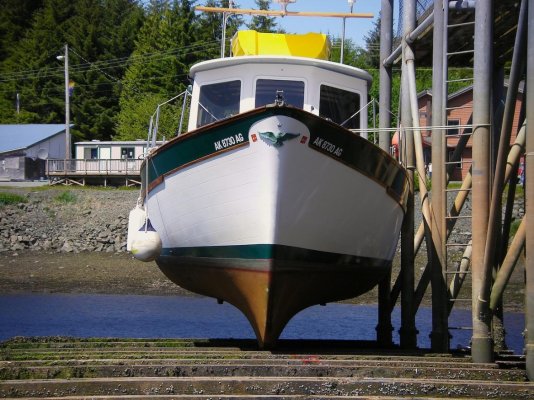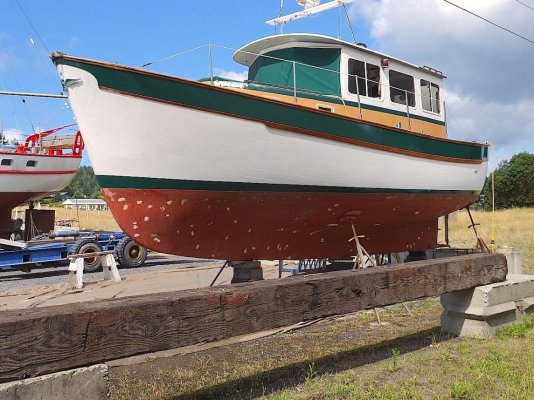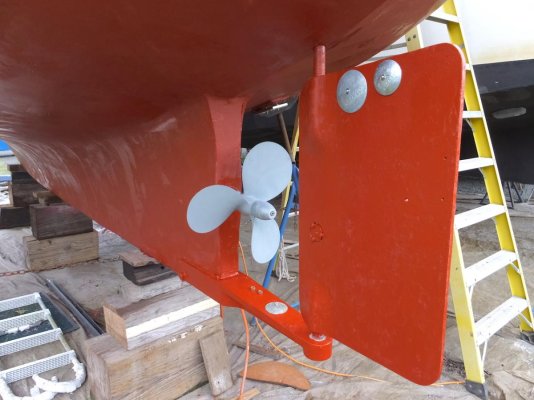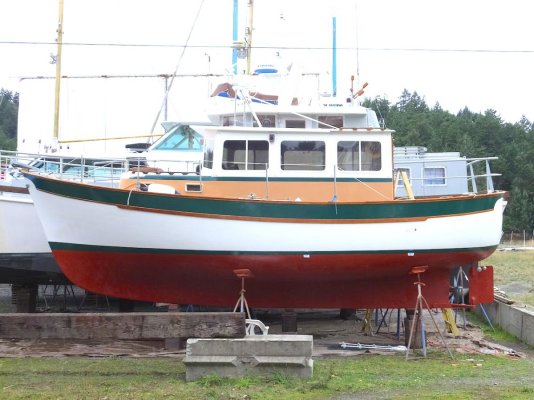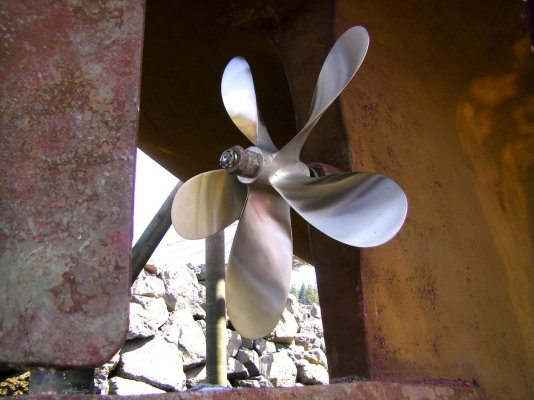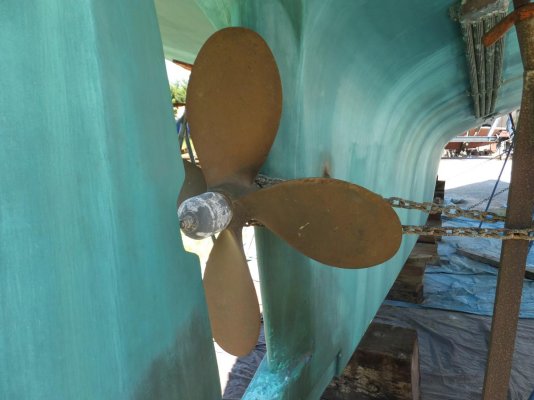eyschulman
Guru
- Joined
- Apr 1, 2014
- Messages
- 1,288
Hey guys your boats have similar WLL but look at your displacement and buttock lines ... the angle of the bottom aft as seen in Ted's pic on post # 161. (top of page).
Ted's FD boat probably weighs 4 or five times your SD (close to planing) hulled boat. All the factors are players in the classification of hulls. But as Tad says many are impossible to classify. eyeshulman's boat is SD but it may have a straight run aft so is not in the middle ofthe SD range. So Ted's boat is at the left end of FD and eyeshulman's boat is at the right end of SD. So they are considerably more different than SD and FD.
As always just an opinion. What's yours?
Oh yes I see the rudder Ted. Looks a bit bent but straight enough to do the deed I'm sure.
Now I've got to figure out how to copy Tad's post have it handy.
Very different bottoms and weights but look at the wakes at sub hull speeds. Both look good and both are probably in good fuel burn ranges no matter where they fall on the FD SD scale. The point I repeat and champion is that a SD boat run at sub hull speeds(basically in FD mode) will run much like any displacement boat of similar length beam and weight and probably better than the real heavies.

